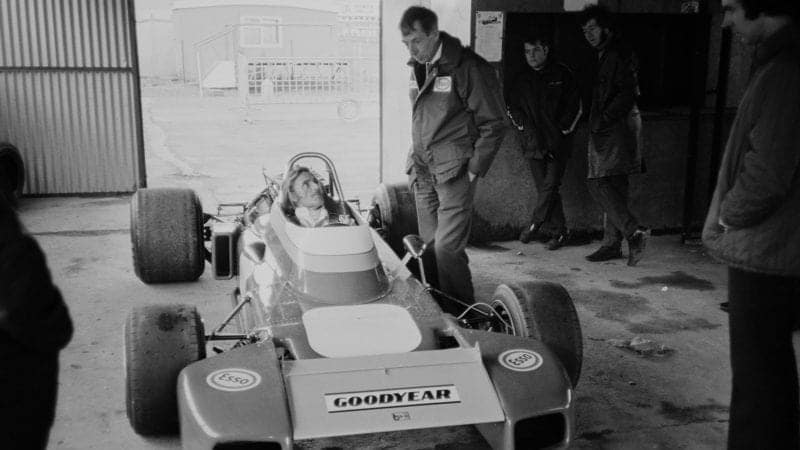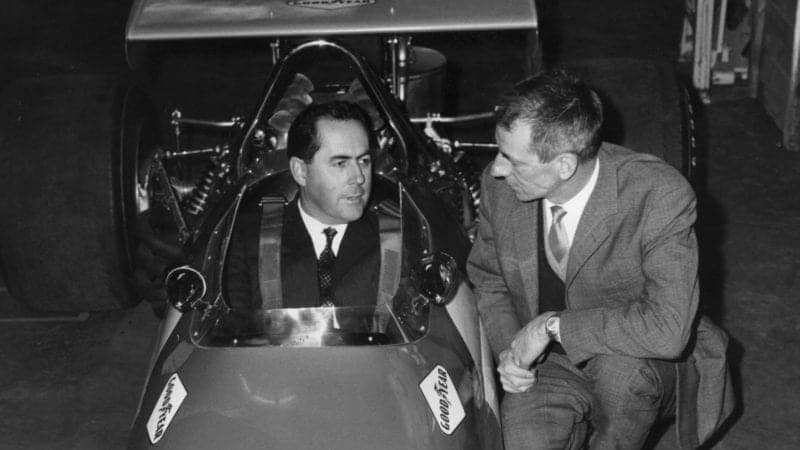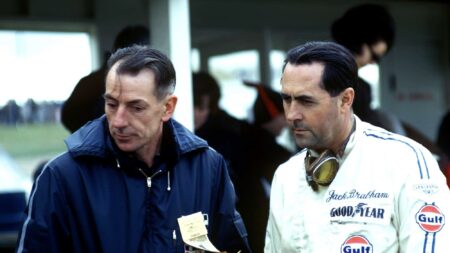“That BT33 of 1970 was typically extremely pragmatic. Its chassis was different but the rest of it was pretty similar to its predecessor. Had Jack not crashed it at Monaco, and had I not run him out of fuel at Brands Hatch, things might have been very different.”
Brabham’s retirement at that season’s end left Tauranac in sole charge of Motor Racing Developments – a role he that was unprepared for and did not relish. He was in negotiation with Bernie Ecclestone by the middle of 1971.
“We didn’t know anything about it,” says Goozée. “I was working an all-nighter with one other when the workshop phone rang at about 10pm. This voice said, ‘Who’s that?’ I replied ‘Who are you?’ It was Bernie Ecclestone: ‘I’ve just bought the team and wanted to see if anybody was working late tonight.’ When Ron came in the next morning he categorically denied it.
“About three days later Bernie and Colin Seeley – Bernie had bought Seeley Motorcycles, too, and was trying to combine the organisations – came to the workshop. Bernie stood on a box and introduced himself him and said, ‘You now work for me.’
I owe him more than anyone except perhaps Roger Penske. He was like a father figure to me
“From the little I understand the offer that he made was substantially more than he actually paid for it. At the conclusion of the contract, he decided that it wasn’t worth as much and that he wasn’t going to pay as much. Ron was exceedingly honourable, utterly straight – a very soft man in fact – and he wasn’t capable of taking on Bernie.
“Ron was very humble. Because his wasn’t an extravagant personality – unlike Colin Chapman’s or John Cooper’s – he just got on with his job, a responsibility that he took very seriously, without anybody really noticing.
“When you design a racing car that bears the name of the man you work with, you are bound to be in the shadows.
“He was not like Chapman, Adrian Newey or Gordon Murray, in that they are regarded as being innovative – he just designed bloody good racing cars, which a huge number of a drivers became very famous as a consequence of having driven them.
“Ron had a great career and a very many people should be grateful that he was a part of their lives. Despite his foibles, I owe him more than anyone except perhaps Roger Penske. He was like a father figure to me and the Brabhams I worked on in that period are those of which I am most proud.”

Brabham with Tauranac, Goodyear’s Leo Mehl and Jochen Rindt at Spa in ’68
Paul-Henri Cahier/Getty Images
P.S. And this from former Brabham F1 mechanic Cary Taylor: “Working with Ron was challenging to say the least as he could be quite excitable with what I always thought was nervous energy.
“He was at his best in the design office. During a car’s build-up he always had plenty to say about what was to go where, but as there were no drawings he would then leave you to it.
“So, having figured out what I thought was the best option and then making, for example, aluminium pipes for oil and water, Ron reappears and, after looking at my finished work, says, ‘That’s good. But had you not thought of doing this or that?’ Hindsight is a wonderful thing.
“Never mind. We made it all work and achieved two world championships.
“He was without doubt one of the best – if not the best – tube-frame race car designer during the 1960s, and the BT24 – with apologies to Ron – has been written up as the most inferior racing car ever to have proved itself the world’s best.”



